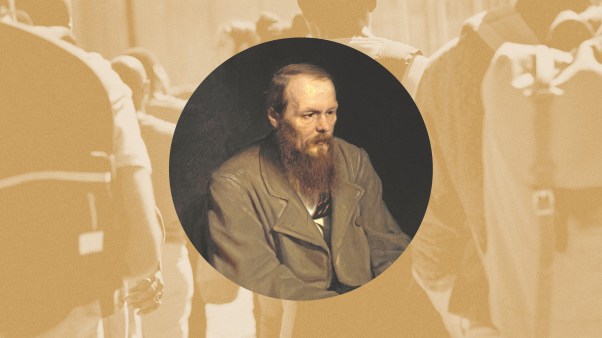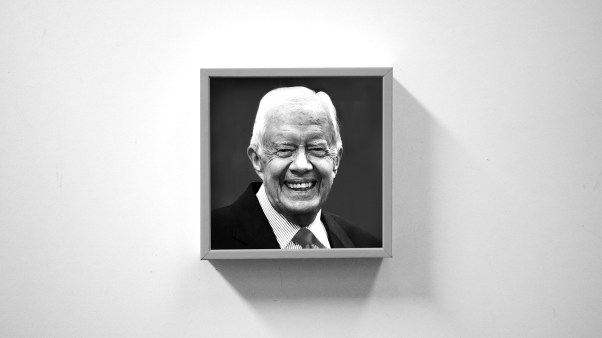When the Philippine government imposed restrictions on public gatherings in early 2020 due to the spread of COVID-19, many small churches faced a dilemma: let go of their pastors or close their doors. These small independent churches heavily depended on physical gatherings to collect the tithes and offerings essential for their weekly finances. The abrupt shift was particularly detrimental to churches serving lower-income communities, especially as the shutdown in the Philippines dragged on for two years.
Many of these churches attempted to transition to online platforms for their weekly worship, but limited IT knowledge and internet access led to lost connections and frustration for pastors. In the Metro Manila district of the Christian and Missionary Alliance Churches of the Philippines where I belong, many of the 120 churches lost up to 30 percent of their members during the pandemic, and a few closed permanently.
However, some churches took a different path by embracing the house church model. This allowed churches to save money on rent and utilities, equip more church members to lead, and free up pastors to engage with families.
Six pastors in our district made this choice, and we witnessed a remarkable transformation in their ministry. Over the next two years, these six churches grew into a network of 180 small groups with an average of 8–10 people meeting regularly. This became the Simbahay House Church Network (simba means “to worship” and bahay means “house”).
When the Philippines fully opened up in October 2022, some of these churches chose to return to rented spaces or to construct better church facilities. Yet what sets them apart is the resilience they developed as they transitioned from one church model to another.
The COVID-19 pandemic serves as a stark warning to the global church. If a health emergency can disrupt congregational meetings, then future threats such as war, famine, or economic collapse could pose similar challenges. So the global church must not only familiarize itself with diverse church models but also be prepared to seamlessly transition to new ones when necessary.
Perhaps it is time for churches to adopt a polymorphic mindset in their approach to church ministry. Much like biological polymorphism, where birds exhibit different feather pigmentation variations, polymorphic churches must readily adopt different forms or types of church models to sustain their faith community and mission.
Church body versus church building
How can we adopt a polymorphic mindset? We begin by revisiting the true essence of the word church, or ekklesia, and understanding how contextual factors have shaped the various ministry models we have today.
Over centuries, the term church has evolved from denoting a “gathering of believers” to a “physical building or a place” such as a cathedral.
In Koine Greek and the first-century Greco-Roman context, ekklesia referred to an “assembly of people” gathered for diverse purposes, whether political, social, or religious. However, in the New Testament, it carries a specific meaning: the “assembly of the people of God.” The New Testament consistently uses ekklesia to signify the community of believers, not a physical structure, though this faith community often necessitates a meeting place.
In the New Testament, the ekklesia frequently met in the homes of their leaders, known as oikos, because they were not welcome in synagogues, according to Met Q. Castillo’s The Church in Thy House. Various passages distinguish between the faith community (ekklesia) and the place of gathering—in this case, the home (oikos):
Romans 16:5: “Greet also the church that meets at their house.”
Colossians 4:15: “Give my greetings to … Nympha and the church in her house.”
Philemon 1:2: “… to the church that meets in your home.”
When persecution intensified, believers sought alternative places of worship, such as caves and catacombs.
Over the first three centuries, the oikos, as a place of gathering, evolved into a larger, extended private home called domus ecclesiae, according to Emerson T. Manaloto’s Let the Church Meet in Your House! As political and social circumstances changed, the ekklesia transitioned to public buildings known as aula ecclesiae for regular meetings. In the 4th century, with the Roman Empire’s conversion to Christianity, the ekklesia gained state-funded places of worship called basilicas, which resemble modern megachurches.
The architectural evolution of the place of worship was influenced more by context than theology or Scripture. The reason local churches evolved from one model to another over time was in order to adapt to their context. Theological reflection may influence the details of architecture, such as direction, space, furniture, or colors, but generally, a place of worship is a product of culture and context.
The ekklesia or faith community is the kernel or core of ministry, while the church structure represents the husk or form embodying the believing community. This means various models—including house churches, megachurches, and institutional churches—may be changed depending on the context, none being inherently more divinely inspired or theologically superior.
Polymorphism in a Filipino context
For the Simbahay House Church Network, transitioning from a corporate church model that requires a building, paid staff, and board of elders to a house church model relying on volunteers not only saved money on rent and utilities. It also became a lifeline for their ministry: The church could allocate limited resources to support their pastors. With pastors freed from the weekly demands of sermon preparation and Sunday events, they had more time to spend with congregants, resulting in an increase of tithing during these visits.
Moving from one church model to another requires more than a change in structure. It requires a paradigm shift in ministry. We can look to these Filipino house churches as a case study on the changes they made.
1) They shifted from preaching to facilitating learning.
Instead of preaching a sermon, pastors taught house church leaders how to read from the Bible. During the gatherings, these leaders involved everyone, including children, in reflecting on and sharing their thoughts about the passage. This approach not only made Scripture understandable but also enabled church members to develop an organic approach to theological reflection.
“I was amazed that my eight-year-old child can have such a deep insight about Jesus’ parable,” said one church member. “And the great thing about it is that he does not only remember the story, but he also knows how to apply it too.”
2) They moved from teaching members to mentoring them and demonstrating leadership.
Our pastors realized that it was better to show leaders how to facilitate and lead a small group by example than having them memorize techniques. For instance, the pastors showed the leaders how to administer Communion, and at the next gathering, the leaders were the ones leading Communion.
To provide continued spiritual accountability, the pastors met with house leaders online each month to address potential false teachings or leadership issues.
3) They transitioned from focusing on church activities to emphasizing spiritual and social accountability.
The pandemic placed limitations on everything from social gatherings to members’ incomes. This prevented churches from running church-based events like men’s fellowship meetings or youth sports events. Yet COVID-19 also led to an increase of needs in the community, including food, baby formula, medicine, and transportation. As the house churches began to meet these needs, they developed deeper connections with both those inside and outside the church.
The simplicity of these house churches allows for deeper and more authentic relationships. Members of the house churches connect and engage with each other more naturally, as life allows them, through eating together, helping each other at work, or listening to each other’s stories.
4) They shifted from having paid workers to having bi-vocational ministers.
While some pastors decided to leave the city and return to their hometowns during the pandemic, others decided to stay and look for jobs so they could continue to serve the church as full-time volunteer pastors. This opened up new opportunities. One pastor started small groups in the workplace that would study the Bible or hold worship services. He now oversees 90 of these marketplace faith communities in 16 companies that he made connections with.
As mentioned before, as the pandemic restrictions eased, some of these churches continued meeting as house churches while others chose to adopt their previous corporate church model and reconvene in rented spaces. One congregation decided to build a new church building.
Those who decided to meet in a church building felt their congregation needed more structure, as parents wanted more stability for their children. Meanwhile, the pastor mentioned above decided to leave his church and serve as a corporate chaplain overseeing marketplace faith communities.
Although these churches are few, they serve as a prime example of a polymorphic church community capable of transitioning from one form to another.
As instability intensifies each year, the global church cannot afford to be a bystander. It must be agile, discerning, and adaptable to various contexts. The most significant threat to the church may come from within, particularly the institutionalized church perpetuating an institutionalized faith. When churches become more concerned with preserving tradition than meeting the world’s needs, they become an enemy of the gospel.
Mission strategist Henry Venn believed indigenous churches should be characterized by three “selfs”: self-supporting, self-government, and self-propagating. Missiologist Paul Hiebert proposed a “fourth self” to the list: self-theologizing. Yet given the current challenges, a fifth one might be necessary: self-evolving.
Jesus said in Matthew 16:18, “I will build my church, and the gates of Hades will not overcome it.” It’s hard to believe he intended to establish an inflexible institution rather than a dynamic movement. Only an adaptable movement can effectively fulfill the command to “make disciples of all nations” (Matt. 28:19).
Jason Richard Tan has more than 20 years of ministry experience in the Philippines, serving as a ministry coach and mentor for pastoral leaders, church planters, mission leaders, and pastoral trainers. He also serves as a ministry strategist for the Global Proclamation Commission for Trainers of Pastors and as a consultant for global ministries.












